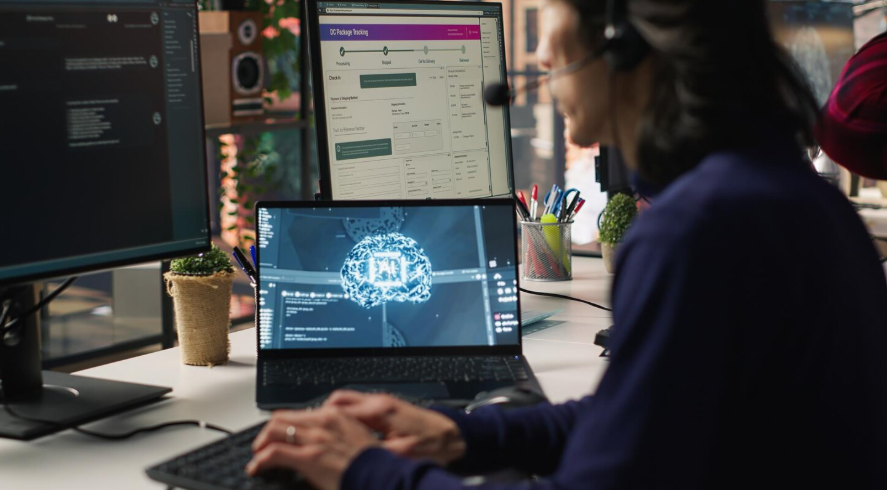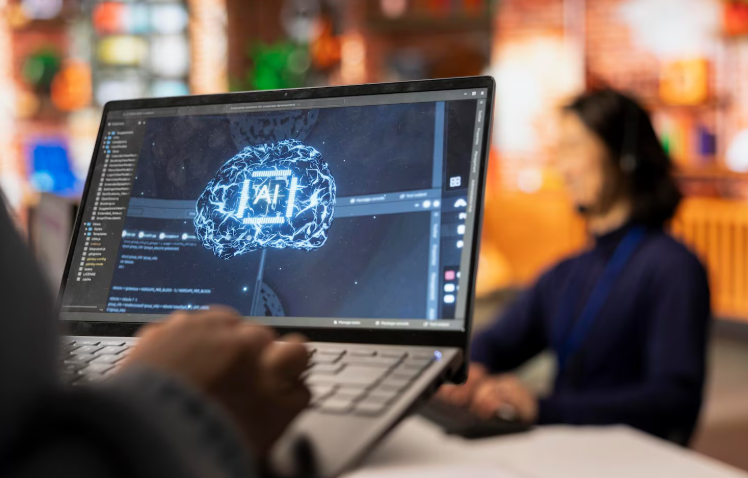The world of web development is undergoing a massive transformation—and artificial intelligence (AI) and automation are at the heart of it. As we approach 2025, these technologies are not just buzzwords; they are driving innovation, speeding up workflows, and reshaping how websites are planned, built, and maintained.
In this blog, we’ll explore the key trends, tools, and impacts of AI and automation in web development, and how your business can stay ahead of the curve.
What’s Changing in 2025?

The traditional model of web development—where every line of code is written by hand and projects take months to deliver—is quickly being disrupted. Here’s how:
- Faster development cycles with AI-assisted coding
- Automated testing and debugging
- Personalized Web Development experiences powered by machine learning
- AI-driven UX/UI design recommendations
- Smarter content generation for SEO and engagement
Let’s explore each of these in detail.
1. AI-Powered Code Generation: Speed Without Compromise
AI tools like GitHub Copilot, ChatGPT, and Tabnine are becoming everyday companions for developers. These systems can write boilerplate code, suggest solutions, and help fix bugs in real-time.
In 2025, expect:
- Greater accuracy in code suggestions
- Improved integration with popular IDEs (e.g., VS Code, WebStorm)
- Full components and modules being auto-generated with minimal input
Why it matters: Your dev team spends less time writing repetitive code and more time on solving real business problems.
2. Automating QA: AI for Testing and Debugging
Quality assurance (QA) is often a bottleneck. AI-based testing tools like Testim or Percy are now able to:
- Detect UI changes
- Auto-generate test cases
- Predict which parts of the site are likely to break
In 2025, expect full regression tests to run autonomously after every deploy. No more manual checklists or overlooked bugs.
Outcome: Faster time to market, reduced human error, and a more stable product.
3. Smarter UX/UI: Design That Learns
AI isn’t just helping write code—it’s helping design it. AI-driven tools like Uizard and Figma’s AI features are transforming how designers work.
Trends to watch:
- Heatmap analysis with predictive behavior
- AI Web Development that learns what users prefer and adapts UI elements accordingly
- Real-time design feedback and suggestions
Result: Designs that are not just pretty—but backed by behavioral data and tailored for conversion.
4. Content Creation with Generative AI
Gone are the days of manually writing every product description or blog post. Generative AI Web Development can now:
- Create SEO-optimized Web Development copy
- Write and A/B test headlines
- Personalize landing page content per user segment
Tools like Jasper and ChatGPT turbocharge content production, letting businesses scale without increasing headcount.
5. AI Chatbots and Customer Interaction
2025 will see near-human virtual assistants on every serious business site. Unlike earlier bots that answered FAQs, AI chatbots now:
- Understand natural language
- Perform tasks (like booking or troubleshooting)
- Integrate with CRMs and data layers
This reduces support workload while increasing engagement and lead conversion.
6. Automation in DevOps: Continuous Everything
CI/CD pipelines are becoming fully automated. Tools like GitHub Actions, CircleCI, and Jenkins X are now powered with AI to:
- Predict failed builds
- Suggest fixes
- Auto-deploy based on user analytics
Your deployment and infrastructure team spends less time managing environments and more time improving performance and scalability.
7. Personalized User Journeys at Scale
AI can analyze user data to build highly personalized experiences:
- Product recommendations based on behavior
- Custom CTAs per visitor persona
- Real-time A/B tests that optimize automatically
Impact: Higher engagement rates, lower bounce rates, and better conversion across the board.
8. AI-Enhanced SEO and Analytics
SEO has traditionally required ongoing effort. With AI, tools can:
- Track competitor changes
- Optimize content automatically
- Predict search trends
Combine this with automated analytics platforms that spot conversion drop-offs and alert you instantly, and your marketing becomes smarter—without lifting a finger.
What This Means for Businesses in 2025
Businesses that embrace AI and automation will:
- Deliver products faster
- Spend less on manual work
- Offer better user experiences
- Stay ahead of competitors
Those that don’t? They risk falling behind in both innovation and customer satisfaction.
Challenges and Considerations
Of course, this isn’t without challenges:
- Data privacy and ethical use of AI
- Dependency on tools vs. human expertise
- Ensuring accessibility and inclusivity in AI-generated outputs
Companies need to find the right balance—combining automation with critical human oversight.
Final Thoughts: The Future Is Already Here
The rise of AI and automation in web development is no longer a future trend—it’s happening now. As 2025 unfolds, the businesses that thrive will be those who adapt quickly, invest in the right tools, and understand how to merge AI with creativity and strategy.
Now is the time to audit your tech stack, empower your dev team with AI-enhanced tools, and future-proof your digital presence.

